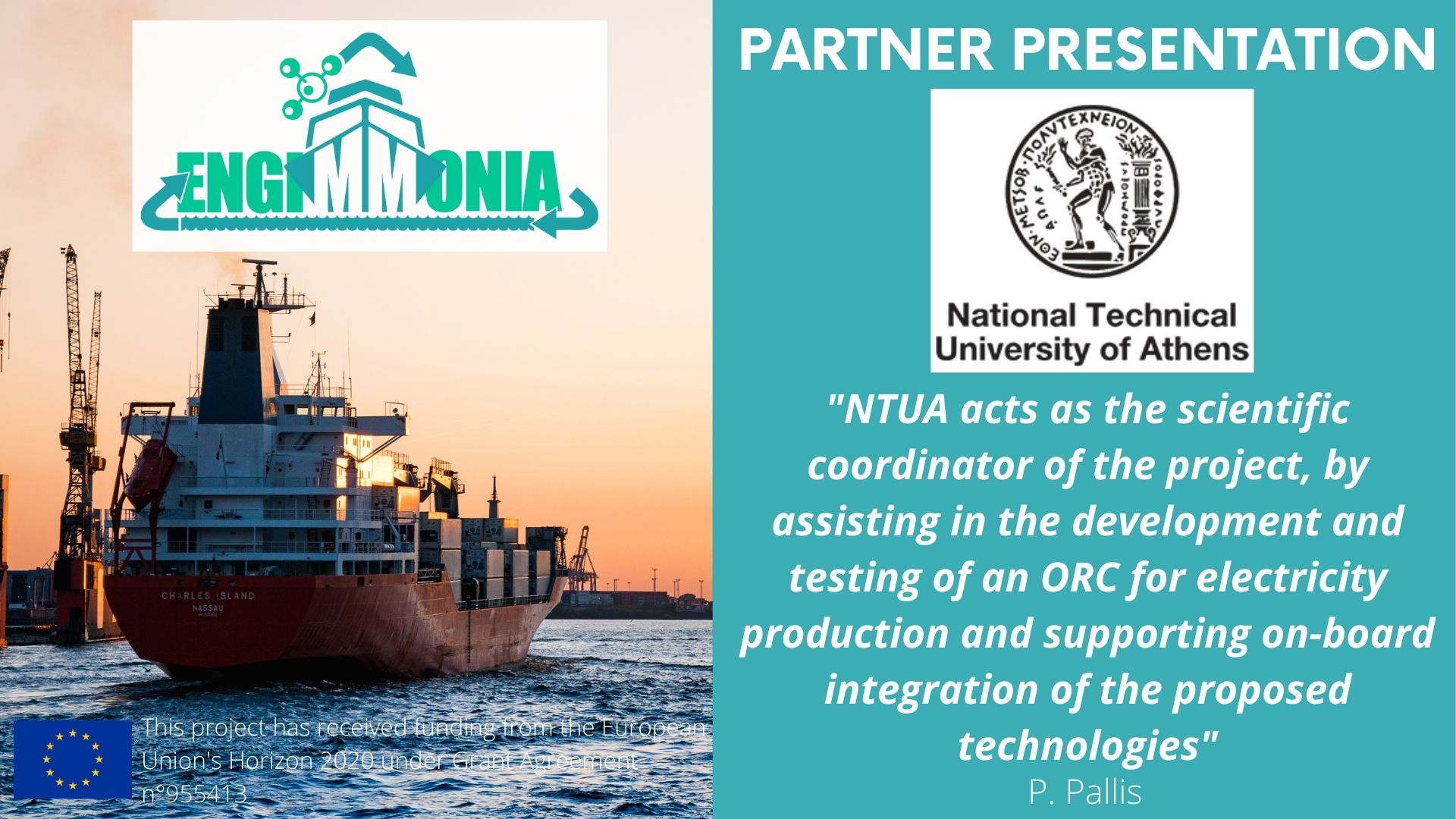INTERVIEW TO Platon Pallis FROM National Technical University of Athens – NTUA
Tell us about NTUA. What is your core business and role within the project?
The National Technical University of Athens (NTUA) is the oldest and most prestigious educational institution of Greece in the field of technology. The Laboratory of Steam Boilers and Thermal Plants (LSBTP) belongs to the School of Mechanical Engineering of the NTUA and is active for over 30 years in the field of energy efficiency and savings, participating in numerous European projects. NTUA will act as the scientific coordinator of the ENGIMMONIA project, ensuring the quality of the provided results. It will assist in the development and testing of an ORC for electricity production and also support the on-board integration of the ENGIMMONIA project proposed technologies. Last but not least, NTUA will provide a numerical platform that integrates all the sub-models of the proposed solutions, that will also be used for technoeconomic evaluation and optimization.
Why did NTUA get involved in the ENGIMMONIA project? How does this activity fit with the normal business of your organisation?
The LSBTP has been involved in and coordinated numerous projects that promote the integration of green technologies in terrestrial applications, having a long experience and expertise in the thermodynamic and thermoeconomic optimization, design, development and experimental testing of ORC systems. The ENGIMMONIA project comes as a great challenge and opportunity for the LSBTP to broaden its technical knowledge and field of study on the performance and technoeconomic assessment of these technologies when applied in the naval sector.
How do you expect the maritime transport sector to be like in the future?
There are many signs that a systemic change is on the way for the marine industry. Targets set by the IMO for substantial reduction of GHG emissions in the maritime sector, sets a challenge for all stakeholders that can no longer be fulfilled just by improving the ship’s engine efficiency and integrating new EATS. New measures such as the use of bio or carbon-free fuels, in the ships main and auxiliary engines, on-board integration of green technologies, extensive use and development of EMS and shore to ship power solutions, need to be implemented.
Which are the most significant challenges and opportunities related to the use of ammonia/clean energy solutions in the maritime sector in your opinion?
Positive feedback of ammonia engines and clean energy solutions integration and operation in the maritime sector could open new horizons for technologies that until now have terrestrial only applications. However numerous safety and operational concerns, associated with ammonia storage and transport as well as with the durability of the green technologies to be installed on-board, need to be tackled.
What are your expectations of the ENGIMMONIA project?
Goal of the LSBTP is to contribute substantially in providing clean energy solutions for the maritime sector at the highest TRL possible, combined with technoeconomic and environmental assessment tools that will allow various stakeholders to embrace their application, leading to benefits both for them and the environment.


